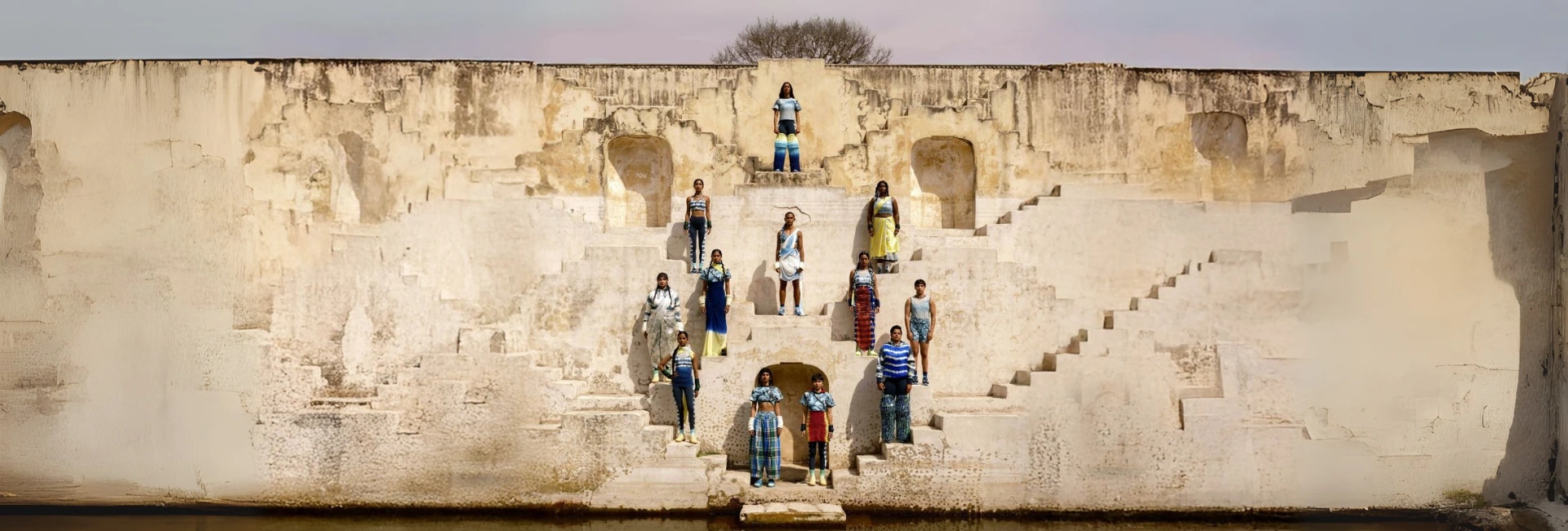(Jul 8, 2025) Bandhani — the ancient Indian hand-dying technique which dates back 5,000 years, just got bolder and colourful, taking the world of fashion by storm.
At a time when fashionistas across the globe are looking at ensembles rooted in culture, the recent collaboration between US sportswear giant Nike and Indian label NorBlack NorWhite, which launched a range of patterned sportswear inspired by bandhani, marks a significant moment in global fashion.
For the Indian fashion designers, it’s the ‘Brand India’ moment they had been waiting for, especially due to the fact that it’s not only inspired by India, it’s built in collaboration with it.
View this post on Instagram
A win for all
“As someone who works deeply with Indian textiles and stories, this collaboration felt like a win for all of us who care about Indian culture, slow fashion, and representation,” Venkat Gaddam, the founder and designer of Whencut Goddamn, tells Global Indian.
He says it’s exciting to see a global sportswear giant like Nike open up space for the kind of cultural storytelling that NorBlack NorWhite has always done so authentically. “This moment signals a larger shift in global fashion—where innovation doesn’t just mean “new,” but also “deeply rooted,” says the Ohio-born designer.
Global stage
Venkat describes Bandhani as one of those techniques that feels both ancient and futuristic in its visual language.
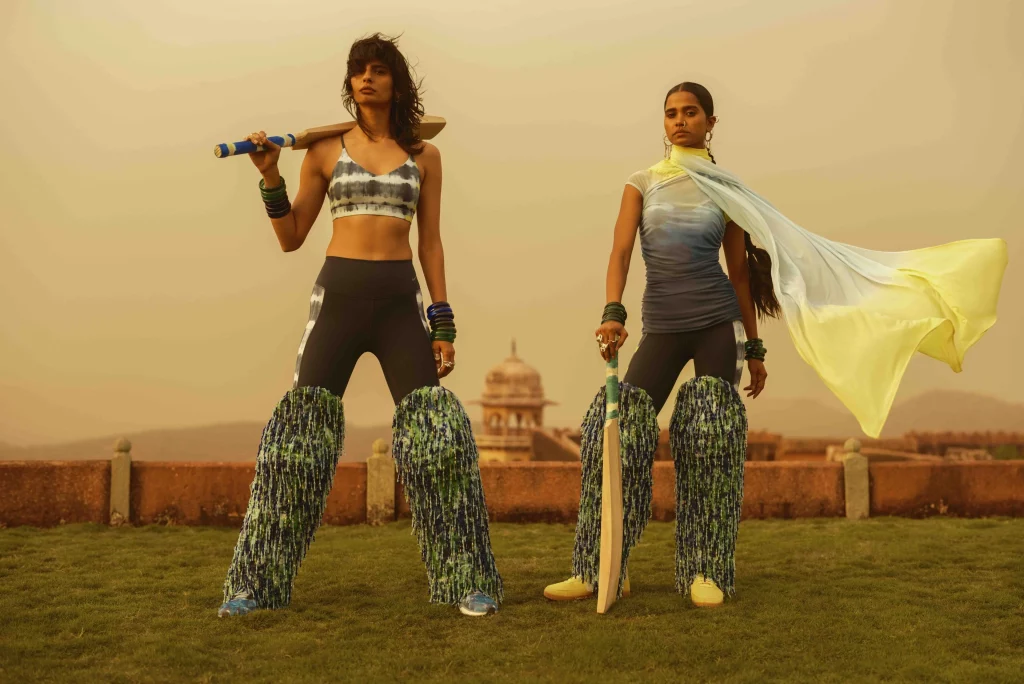
“The geometry, the colour play, the handcrafted nature—it photographs beautifully, it wears beautifully, and it holds history in every dot,” says Venkat, whose creations have been worn by a host of celebrities like Nagarjuna, Karan Johar, Armaan Malik, Faria Abdullah and Niharika Konidela, as well as by clients from around the globe.
Globally, says Venkat, as the world leans into pieces that have meaning and traceable stories, he definitely sees Bandhani finding resonance beyond India—not just as a print or aesthetic, but as a textile that embodies patience, precision, and poetry.
In demand
Back home in India, Bandhani is still in huge demand, he says. “In my experience, especially among younger buyers, there’s a growing hunger for tradition—but on their own terms. They want clothes that feel rooted but not rigid, Bandhani allows that,” he points out.
He mentions that the process is painstaking and involves tying thousands of tiny knots on fabric before dyeing it, often done by women across Gujarat and Rajasthan. “What emerges is a kind of magic—no two pieces are ever the same. That uniqueness, that slow labour of love, is what makes it enduring.”
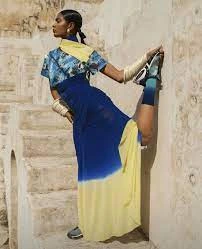
Future collaborations
Venkat says India is a country of thousands of textiles and techniques, and only a fraction have made it to global consciousness. “But we are in a moment where the world is ready to listen—to slow down, to go deeper. I do see more collaborations happening (post Nike-NorBlack NorWhite),” he mentions.
Importantly, Venkat hopes they’re done with respect, fair compensation, and real co-creation. “If brands can move beyond tokenism and towards true partnership, we are looking at a very exciting decade ahead.”
Shot in Jaipur
Nike’s new campaign features Indian cricketers Jemimah Rodrigues and Shafali Verma, alongside wrestler Anshu Malik and sprinter Priya Mohan.
Accompanying images, shot by celebrated fashion photographer Bharat Sikka, show the female athletes posing in the historic city of Jaipur — including on its iconic stepwells.
Bharat Sikka, who holds a Bachelors of Fine Arts degree in photography from Parsons School of Design, New York, lives and works between Europe and India. His long term photographic projects have centred around the cultural residues and societal transformations within India, rendered with the visual language and material forms of contemporary art photography.
Packed with bold silhouettes and even bolder storytelling, the limited-edition collection with female-owned NorBlack NorWhite features a hoodie, tank top, T-shirt and sports bras, as well as a cross-body bag and several pairs of sneakers, including a variation of the popular Air Max range.
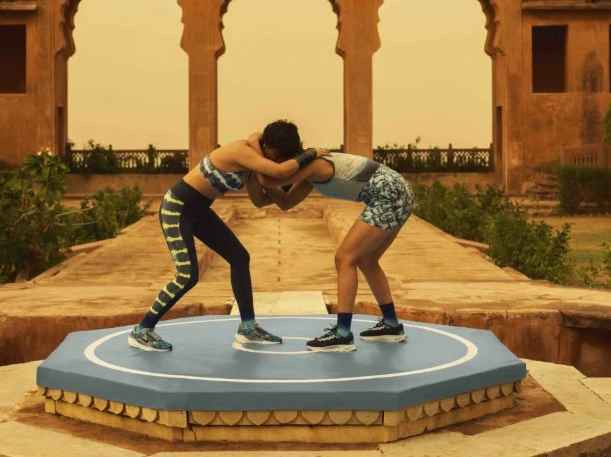
Bandhani
Earliest evidence of Bandhani dates back to the Indus Valley civilization. The earliest example of the most pervasive type of Bandhani dots can be seen in the 6th century paintings depicting the life of Buddha found on the wall of Cave at Ajanta. Even the ancient city of Mohenjo-daro has traces of bandhani art.
Today, Bandhani making centers are situated mostly in Gujarat, Rajasthan, parts of Punjab and Tamil Nadu.
The art of Bandhani is a highly skilled process. The technique involves dyeing a fabric which is tied tightly with a thread at several points, thus producing a variety of patterns. The main colours used in Bandhana are yellow, red, blue, green and black.
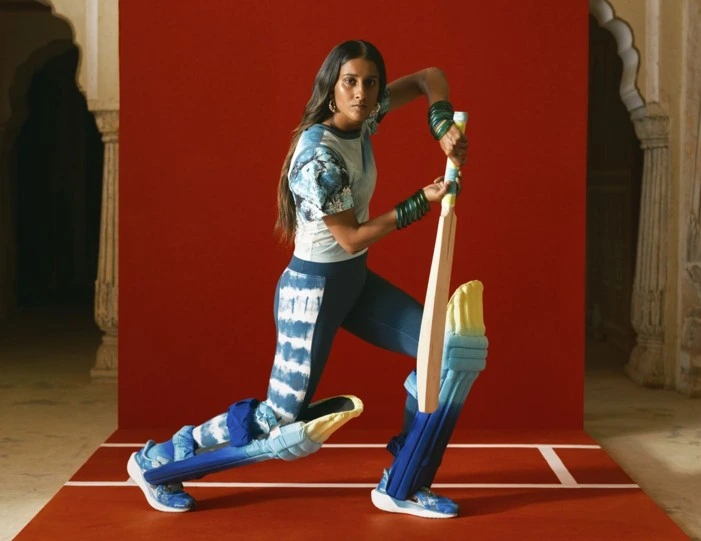
NorBlack NorWhite
It is a technique that NorBlack NorWhite has often incorporated into its designs. Founded by Canadian-born designers Mriga Kapadiya and Amrit Kumar, following their relocation to India in 2010, the label is known for combining streetwear with local craft traditions.
In a statement, published via Nike’s website, Kapadiya said the brand “started with a deep admiration for the crafts practices of India and the people who bring them to life.” “This collection shines a light on the rigour, dedication and ancestral knowledge that’s rooted in Indian culture,” she added, “and we hope each piece inspires women to draw into their own athletic mindset while navigating everyday life in India and around the world.”
Significant moment
Renowned Indian fashion designer Rina Dhaka describes the collaboration as a significant moment in global fashion. “The fact that Nike has found these talented designers with a very symbolic name (NorBlack NorWhite) is indeed special. With a population like ours, we are one of the greatest consumers and there is no way our talent can be ignored,” says Rina, whose designs have been worn by celebrities including Naomi Campbell, Uma Thurman and Lara Dutta.
Her works have also been exhibited at The Louvre in Paris and the Metropolitan Museum of Art in New York City.
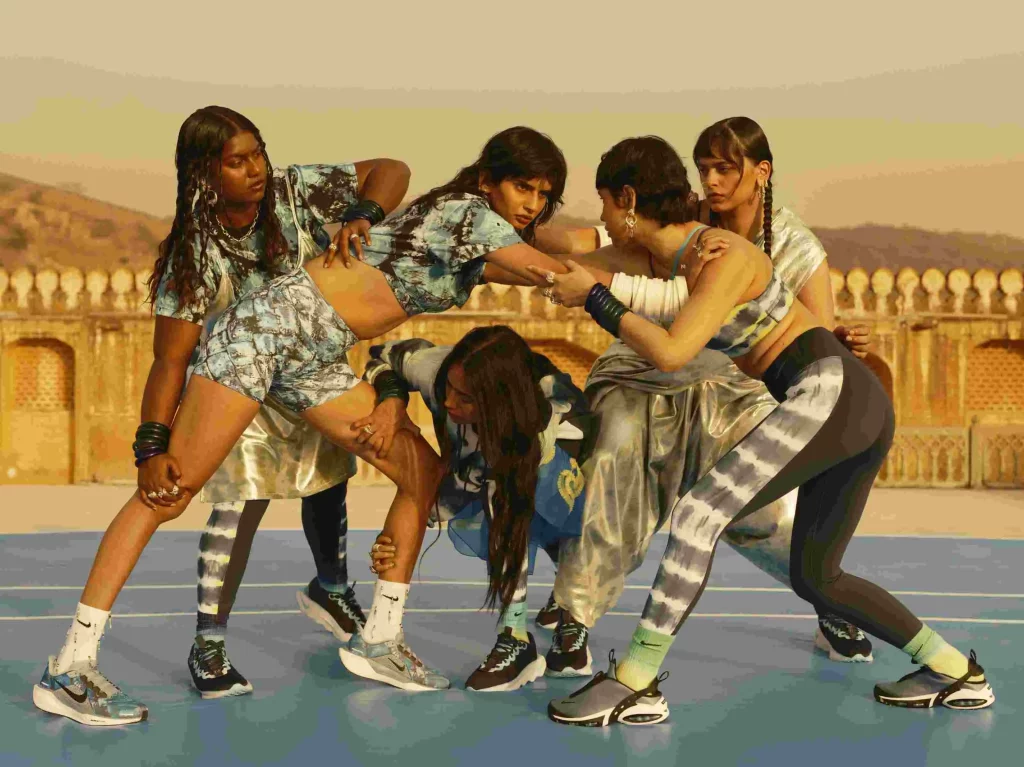
A classic collection
Speaking to Global Indian, Rina Dhaka mentions that tie-dye is classic, which makes the Nike collection even more special. “It’s very refreshing and sporty and fits into the story or the narrative they’re trying to tell. For me, this is a real win-win and I can never have enough of it,” smiles Rina, describing bandhani as an essential part of clothing.
She hopes for more such collaborations in future. “Designers from all over the world are very much part of the global fashion scene as their brands and creations are available in stores globally. It’s great to have a blend of different sensibilities and histories as they perceive it,” adds the designer who won the designer choice award at Miami Fashion Week in 2004.

